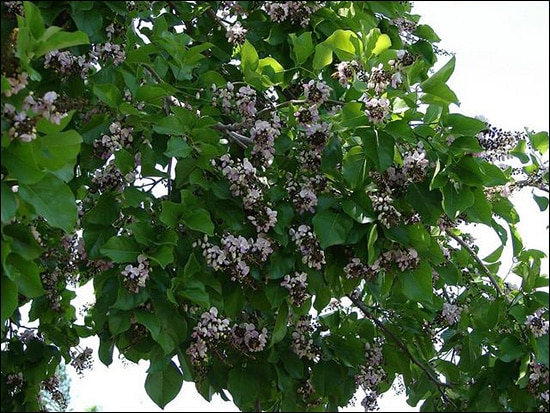Karanj / Indian Beech (Pongamia Pinnata)- Ayurvedic Properties, Effects On Doshas & Dosage
Description
Medicinal herbs play a very crucial role in human lives for several years to manage various health conditions all over the world. Plants are the basic producer of active components for many chemicals that are highly rich in medicinal properties and are used to prepare a good health maintainer. There are many herbs that are highly prestigious for their medicinal properties. Karanj is a fast-growing medium-sized tree that belongs to the Fabaceae family. Karanja is a medicinal herb mainly used for skin disorders, all parts of the tree (roots, flowers, leaves, bark) are used for medicinal purposes and it is highly known for its oil preparation, its reference is widely found in the classical literature of traditional medicinal textbooks like Samhitas or Nighantus. This has various properties like anti-hyperglycemic, anti-diarrheal, antiplasmodial, and analgesic properties. It is a medium-sized, deciduous tree 35–40 feet long, with alternate leaves, lavender, pink, and white colored flowers. Flavonoids are the most common chemical composition derived from this plant.

Special Note About This Plant
- Pongamia pinnata is the botanical name of Karanj and belongs to the Fabaceae family.
- This herb is used for the management of skin ailments and its twigs are famous as toothbrushes in ancient times.
- The principal constituents of this herb are Flavonoids. Flavonoid derivatives are flavones, flavans, and chalcones.
- This herb is native to eastern and tropical Asia, is very versatile, and has many medicinal properties.
- Karanj is widely used for managing various diseases like gastric issues, Constipation, promoting hair growth, dandruff, skin diseases, etc.
Systemic Classification
- Botanical Name – Pongamia pinnata
- Family – Fabaceae
- Genus – Pongamia
- Species – P. pinnata
Synonyms
- Karanj – colouring agent of water
- Naktmal – looks beautiful at night
- Guchpushpak – its flowers are found in clusters
- Ghritpoor – its seeds are filled with ghrit
- Snigadhpatra – its leaves are moist and unctuous
Other Vernacular Names
- In Hindi – Dithouri
- In Bengali – Dahar Karanj
- In Malayalam – Ponnam
- In Gujarati – Karanj, Kannjhi
- In Telugu – Pungu
- In English – Indian Beech
Habitat
- Its plant grows up to 12 metres high.
- The trunk is slightly crooked with a greyish brown bark.
- Flowers are pink, lavender, and white color.
- Seeds are consisting of brittle coating, not good in taste.
- This herb is distributed throughout India up to 1200 ft height from sea level.
Classical Categorization
- In Charak Samhita, this herb is mentioned in Kandughana group and is also added in Katu skandha.
- In Sushrut Samhita, this herb is categorised under Aragwadhadi, Varunadi, arkadi gana. These all gannas are specifically used to control the Kapha Dosha.
- Dhanwantri Nighantu has mentioned this herb in Amradivarga.
- Bhavprakash Nighantu has mentioned this herb in Guduchyadi Varga.
Ancient Verse
Shloka – 1
करञ्जश्चोष्णातिक्तकः स्यात् कफपित्तास्रदोषजित्।
व्रणप्लीहकृमिन हन्ति भूतघ्नो योनिरोगहा।।
Reference – Dhanwantri Nighantu/ AmradiVarga
Interpretation of Shloka – This herb is hot, and bitter, pacifies Kapha and Pitta, and cures blood disease, ulcers, spleen diseases, worm manifestations, bacterial infections, and vaginal diseases.
Shloka – 2
करञ्ज: कटुकस्तीक्षणोवीर्योष्णोयोनिदोषहृत्।
कुष्ठोदावर्तगुल्मार्शोव्रणक्रिमिकफापहा।
तत्पत्रं कफवातार्शः कृमिशोथहरं वरं।।
भेदनम् कटुकम् पाके वार्योष्णं पित्तलम लघु।।
तत्फलं कफवातघ्नं मेहार्शः कृमिकुष्ठजित्।
घृतपूर्णकरञ्जोऽपिकरञ्जसदृशो गुणैः।।
Reference – Sushrut Samhita Sutra Sthana 28 / 8
Interpretation of Shloka – The taste of the herb is pungent, dry and sharp, hot in potency, and effectively works against the Kapha dosha. Vaginal diseases, skin diseases, flatulence, abdominal tumour, haemorrhoids, ulcerations, and bacterial infections are therapeutic properties. Its ghrit is also useful in these various conditions, its leaves are beneficial in haemorrhoids, worm infestations, polyuria, and skin diseases.
Shloka – 3
करञ्जफलं जंतु प्रमेहजित्। रूक्षोष्णां कटुकम पाके लघु वातकफापहम।।
Reference – Sushrut sutra – 46
Interpretation of Shloka – The fruit of this plant is effective in worm infestations, and diabetic disorders, this works as dry, hot, pungent rasa and is useful in Vata-kapha diseases.
Ayurvedic Properties
- Rasa (Taste) – Katu (Pungent), Tikta (Bitter), Kashaya (Astringent)
- Guna (Quality) – Laghu (light), Teekshna (sharp)
- Veerya (Potency) – Ushna (Hot)
- Vipaka (Post digestive effect) – Katu (Pungent)
- Karma (Action) – Balances the Vata and Kapha dosha
- Projyang (Part used) – Bark, leaves, and seeds are used
Effects On Doshas
This herb is helpful in balancing the Vata and Kapha dosha but may aggravate the Pitta dosha.
Practical Uses
- Due to its vata-kapha shamak properties, this herb is very helpful in Kapha-vata janya diseases.
- Its leaves, bark, and seeds all are helpful in eradicating worm infestations, good for healing, and act as a great analgesic.
- This is good in bleeding disorders and is anti-inflammatory in nature.
- This herb is specially used in Whooping cough (Kukkur Khansi) as seed powder.
- This herb helps in loss of appetite, acts as deepan, and is an appetiser in qualities, stimulating the secretion of digestive juices.
- Helpful in treating piles and haemorrhoids and relieving pain and inflammation caused due to open wounds and burns.
- It has properties that can detoxify the vagina and treat uterine disorders and its fruits are also used to treat psoriasis and other skin infections.
- Karanja oil is also useful in arthritis due to its anti-inflammatory activity.
- Karanja stem has been used for cleaning teeth and strengthening gums since ancient times.
- To get relief from the pain and swelling of piles, karanj oil can be applied by mixing it with Coconut oil.
Dosage
- Decoction of bark and leaves can be taken in 10-20 ml.
- Its seed powder is taken in 1-3 grams.
Ayurvedic Products
- Karanj oil
- Maha manjisthadi kashayam
- Karanj powder



